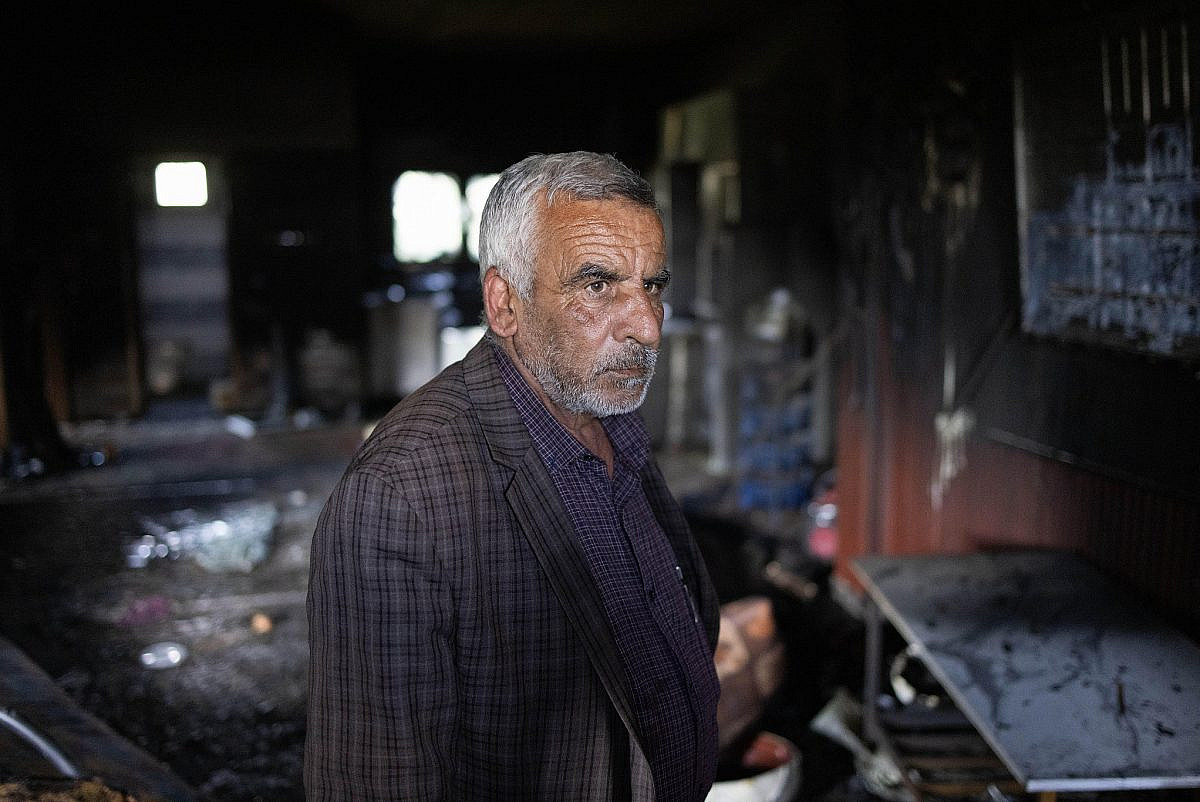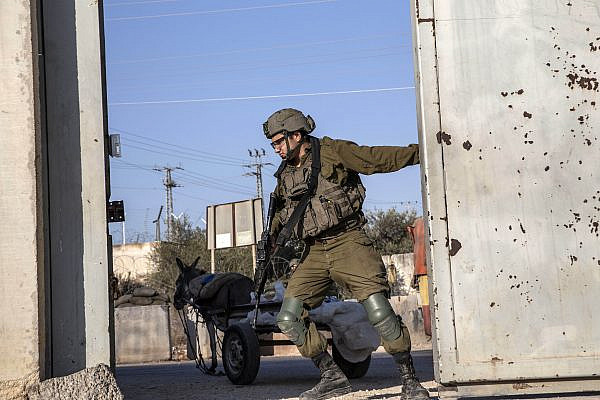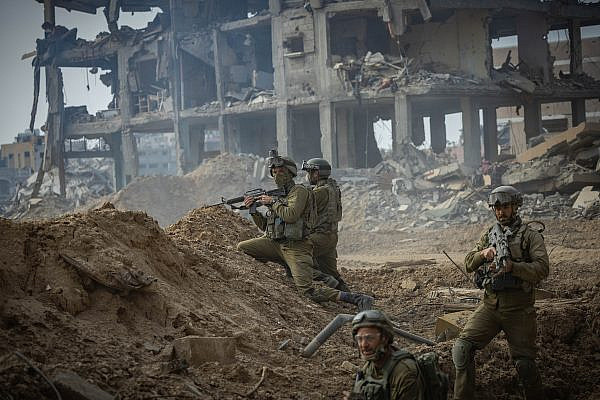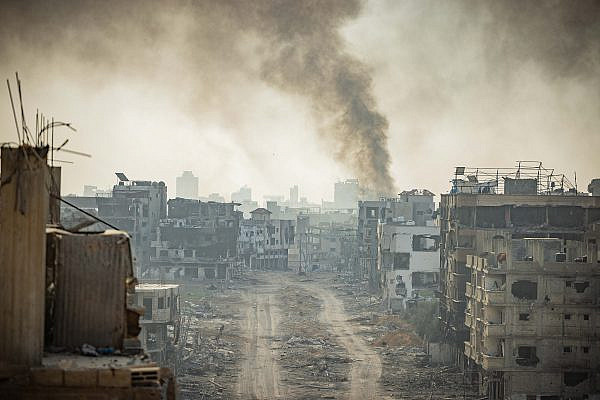Israeli settlers embarked on a murderous rampage across the occupied West Bank over the weekend, killing at least three Palestinians and destroying property in more than a dozen villages and towns. The immediate trigger for the attacks was the disappearance on Friday, April 12 of Binyamin Ahimeir, a 14-year-old Israeli who went out shepherding that morning from the recently “legalized” Malachei HaShalom (“Angels of Peace”) outpost. By the time Israeli authorities found Ahimeir’s body the following day and declared him a terror victim, the settlers’ rampage through the surrounding Palestinian communities was already in full swing.
According to the human rights group Yesh Din, Israeli settlers attacked 11 Palestinian villages and towns on Saturday alone. They threw stones, set fire to more than 100 vehicles, damaged scores of homes and businesses, and slaughtered hundreds of livestock. In the village of Beitin, near Ramallah, settlers shot dead 17-year-old Omar Hamed. In Al-Mughayyir, slightly further north, 25-year-old Jihad Abu Aliya was killed in circumstances that are still somewhat unclear: settlers were attacking the village at the time, but the Israeli army stated that Abu Aliya was killed by their fire. Another incident captured on a security camera shows Israeli soldiers standing guard while settlers set fire to a car in the town of Deir Dibwan, also near Ramallah.
The pogroms continued into Monday, when Israeli settlers shot dead two Palestinian shepherds — Abdelrahman Bani Fadel, 30, and Mohammed Ashraf Bani Jama, 21 — on land belonging to the community of Khirbet al-Tawil, east of the town of Aqraba near Nablus. According to testimonies from villagers, a large group of settlers, some of them armed, entered privately-owned Palestinian land near the residents’ homes at around 4 p.m. with a herd of cows (settlers are increasingly choosing to herd cows over sheep and goats because they eat more and are harder to frighten). Later, more settlers arrived, some of them armed and masked. Soldiers also arrived on the scene.
Shortly thereafter, according to eyewitnesses, in broad daylight, settlers opened fire on the Palestinians, killing the two men. The IDF Spokesperson subsequently announced that the shooting had not been carried out by soldiers. The event was live streamed on the Facebook page of the adjacent Palestinian town; in the video, dozens of shots can be heard ringing out in several clusters for more than a minute.
Nidal, whose cousin, Abdelrahman, was killed yesterday and who was present at the scene, told +972: “I told the soldiers to push the settlers out and we’ll leave. Some had weapons and clubs, some were masked.” According to Nidal, one of the settlers then pepper sprayed one of the Palestinians, and a brawl ensued. “The soldiers fired in the air, and seconds later the settlers fired M16s from up close,” he said. “I’ve lived here for 35 years — there’s no law here. The settlers are above the law.”
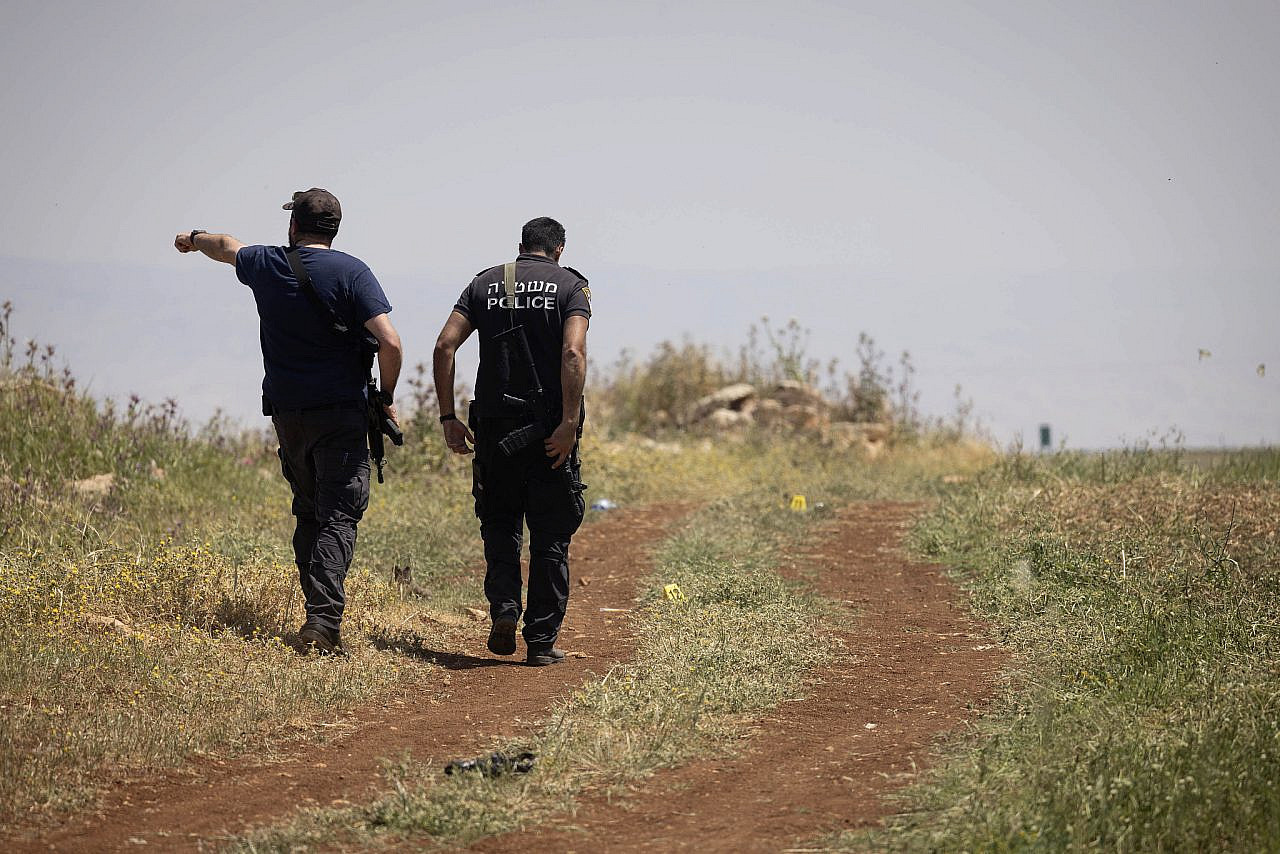
For now, it appears that the Israeli authorities are taking the incident seriously: the military did not allow the bodies to be evacuated, transferring them instead to the National Center of Forensic Medicine for autopsy, which theoretically could enable the police to identify the shooters. On Tuesday morning, officers from the police’s Forensic Science Unit were seen at the scene of the shooting, collecting evidence and photographing the area.
The chances of a violent settler being brought to justice under Israeli law, however, are extremely low: since 2005, only 3 percent of Israeli police files opened regarding settler violence ended in conviction. In response to our request for comment, police told +972 that no arrests have been made so far in connection with the incident.
‘The soldiers stood by and didn’t intervene’
In the mourning tent in the center of Aqraba on Tuesday, Maher Bani Fadel, father of Abdelrahman, recounted the incident to +972. “At first, they came — four settlers with their cattle — and went into the olive grove near the houses,” he said. “They called for more settlers: a few dozen came, and they threw stones at us. There were about 20 of us, and four or five soldiers were present. The settlers fired live ammunition at us, maybe 30-40 bullets, from a few meters away. A lot of them had weapons; I don’t know which ones fired. It’s a new weapon they received from [Israeli National Security Minister Itamar] Ben Gvir.
“When the army saw the two dead bodies, they started separating [the settlers and the Palestinians],” Maher continued, adding that he was hit with a club and a stone during the incident. Before the shooting, “we told [the settlers] they weren’t allowed to be here. They said the government gave them permission, but it’s land belonging to our parents and grandparents.”
The mayor of Aqraba, Saleh Jaber, who arrived at the scene before the shooting, told +972: “Residents called me, saying there was a [settler’s] herd of cattle near the houses. We contacted the Civil Administration [the bureaucratic arm of the Israeli occupation] but the police came only after the killing.”
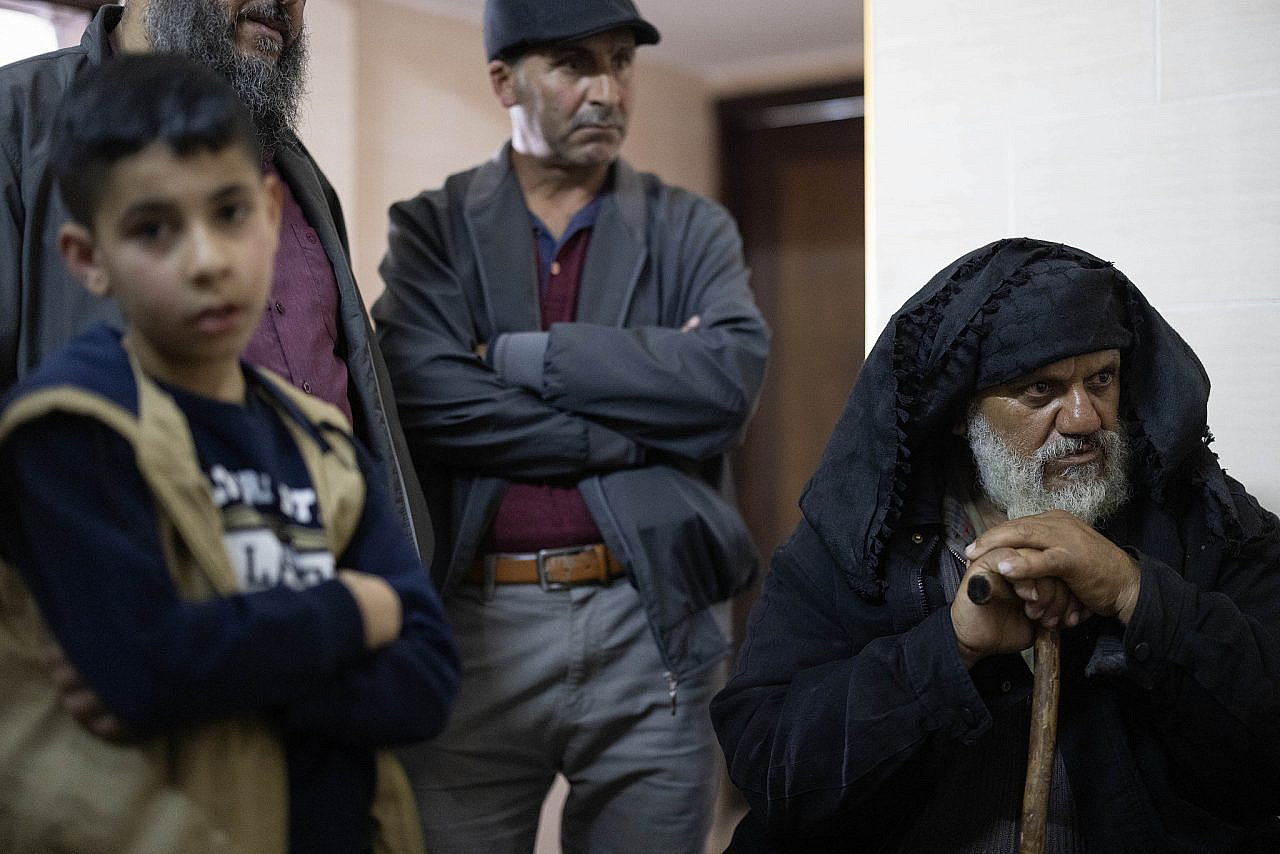
The IDF Spokesperson announced after the incident that soldiers had arrived in the area after reports of an attack by Palestinians on a Jewish shepherd. Jaber rejects this characterization of events, clarifying that it was settlers who initiated the attack. “It’s not true that the shepherds attacked,” he said. “I was there and there was no attack by the shepherds. The settlers who fired were dressed in civilian clothes and armed with M16s. The soldiers first fired in the air and then settlers fired [at the Palestinians]. The soldiers stood by and didn’t intervene.”
About a month ago, Israeli soldiers shot dead the Palestinian shepherd Fakher Jaber, 43, in the same area. According to a testimony published by Haaretz, Jaber was sitting under a tree when he was shot. Then, too, the IDF Spokesperson claimed that the army arrived at the scene following a report of an attack on a settler.
Dror Etkes, a researcher with the organization Kerem Navot which closely monitors Israel’s takeover of Palestinian land in the West Bank, confirmed that the attack took place on private Palestinian land. In recent years, two settler outposts have been encroaching on Palestinian land in the area: “Jackson’s Farm,” near the settlement of Gitit, and “Itamar Cohen’s Farm,” to the north. “The settlements, outposts, firing zones, and declarations of state land are closing in on Aqraba and the communities in the area from three directions,” Etkes told +972. “They have a lot of fertile land, so they have become a target for plunder.”
Last month, the state declared 8,160 dunams (around 2,000 acres) of land in Aqraba as “state land,” not including the land where the two shepherds were shot on Monday. According to Jaber, the takeover of Palestinian land in the area has accelerated under Israel’s far-right government. “Their goal is to take over all the land in the Jordan Valley,” he said. “What happened [on Monday] is the direct result of settler harassment and land expropriation.”
‘The settlers came back five times’
Another Palestinian town hit badly by settler attacks on Saturday was Duma. According to residents who spoke to +972, around 200 settlers — many of them masked, and some of them armed — raided the town shortly after the body of the teenager Ahimeir was found. They set fire to homes, cars, and farm equipment, and attacked residents. Soldiers were also present, as seen in videos from the incident, and even fired tear gas at Palestinians who tried to repel the settlers.
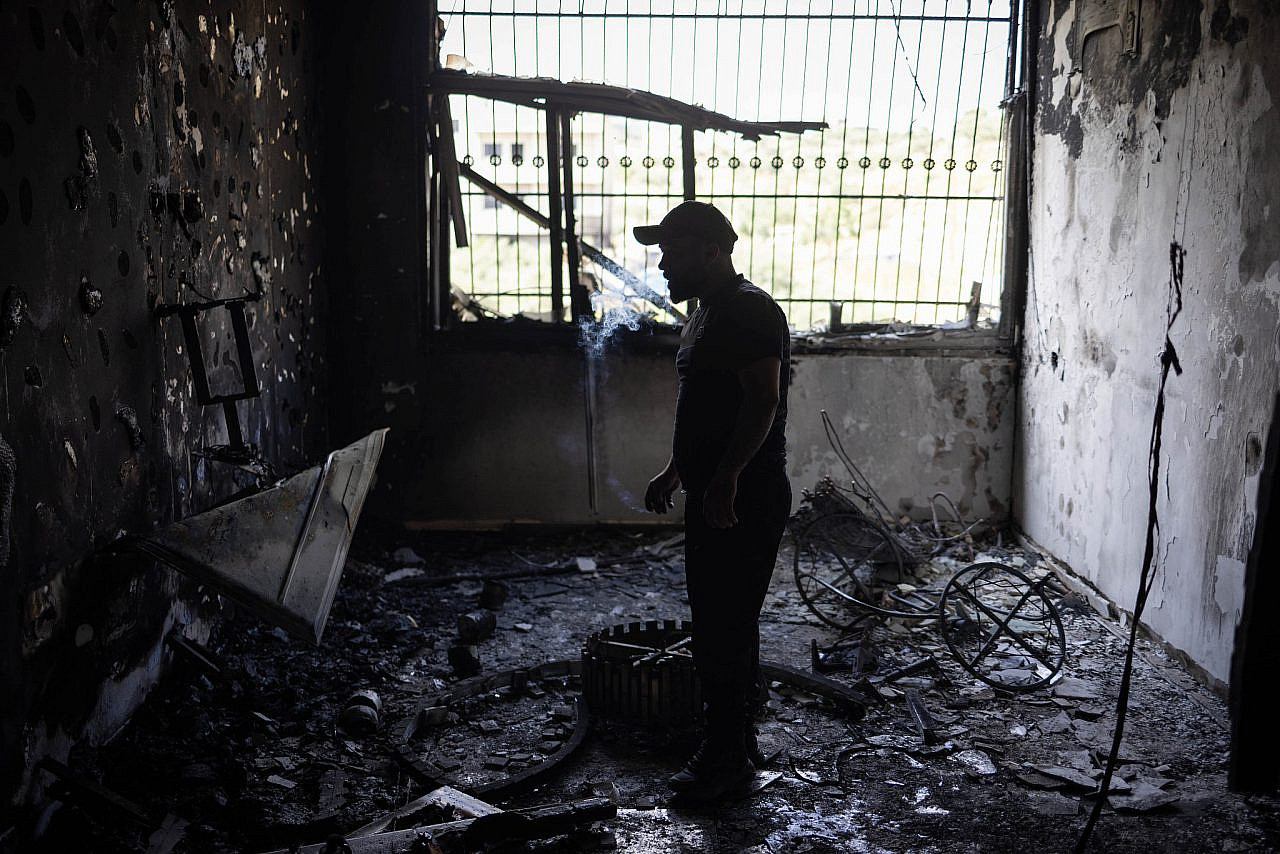
“If they weren’t masked, I might have recognized them,” Murad Dawabsheh, a 52-year-old father of five, said of the settlers who attacked his home on Saturday; before October 7, he worked as a construction worker in one of the nearby settlements. Speaking to +972 on Sunday, he sat in front of his burned garden offering visiting well-wishers some of the ful that he managed to salvage from the blackened plants.
In addition to the garden, settlers burned to the ground a small building next to his house which served as an office and storage room, as well as a warehouse containing wooden construction planks worth thousands of shekels. The attackers also tried to set fire to the front door of the house using clothes and shoes that they’d found nearby. “There were soldiers with them,” Murad recounted. “When I saw them coming, I went into the house. Later, I opened the door for a moment, poured water and pushed the burning clothes away with my foot. The settlers came back five times.”
In his former office, settlers set alight many books, including religious books and poetry. “This is my archive,” he lamented. “Who burns books? I understand Hebrew, I heard them telling each other to burn down the gray house [the main building where Dawabsheh’s family was hiding]. I didn’t have time to be afraid for myself, I was afraid for my wife and children.”
The head of the town council, Hussein Dawabsheh, told +972 that according to initial information, three agricultural buildings and seven houses were partially burned during the attack, and five houses were burned completely. Fifteen vehicles, an excavator and three tractors, farmland, and olive trees were also set ablaze.
“We are all in danger when the army enters with the settlers,” he said. “The settlers walked in a large group. The older ones gave instructions to the younger ones — where to go and what to burn.” According to Hussein, the military prevented fire trucks and ambulances from entering the village during the attack.
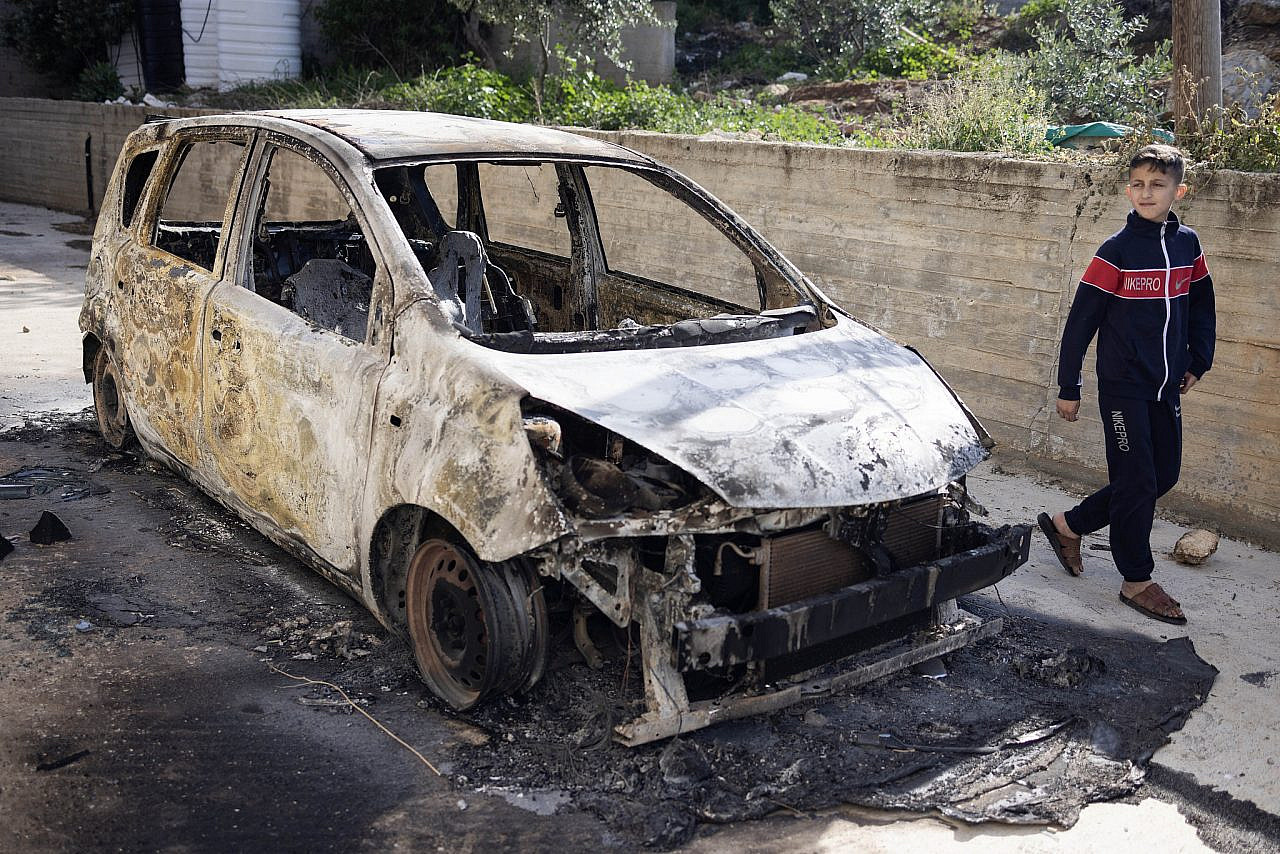
‘If residents hadn’t fled, entire families would have burned’
Most of the damage in the attack on Duma was in the Khalat al-Dara neighborhood, located parallel to the Alon Road which connects the Ramallah area to the Jordan Valley. On Sunday, Mohammed Salawdeh stood in his workshop and appraised the extensive damage. Here, as in other houses, piles of straw and twigs could be seen in different corners of the house — evidence of the settlers’ attempts to set fire to the building.
When the attack began, Salawdeh fled to another house in a safer, more central part of the village. “On the way, we saw armed people — some with bottles of gasoline and Molotov cocktails, some in military uniforms — guarded by the army. If someone tried to defend [the village], they shot him.”
A few meters away from Mohammed’s house stands the charred remains of the home of his relative, Anwar Salawdeh. The elegant house, which 27-year-old Anwar had only recently finished building and furnishing, was set on fire by settlers on Saturday, causing severe damage.
“I left school to work at the age of 13, and saved up since then until I could build a house,” Anwar told +972, his voice muted. “At the time of the attack, I was working in Anata [a Palestinian town near Jerusalem]; I only came back today.” The cost of building the house, he said, was about NIS 150,000 (around $40,000). “I have another NIS 100,000 in loans. I started building the house in 2020 and finished this year with the intention of getting married and living here,” Anwar continued, showing me photos of the house before it was destroyed.
Elsewhere in the neighborhood, Mohammed Rashid Dawabsheh stayed to protect his home during the attack after his wife Abir fled in a car with their four children and another relative toward the town center when the settlers arrived. “When I was in the car, I saw a settler dressed in black opening fire,” Abir told +972. The lower apartment in the building, which was recently renovated, sustained extensive damage: windows were shattered, and the stones that the settlers threw and the wooden beams they shoved into the broken windows to push burning straw inside were still visible.
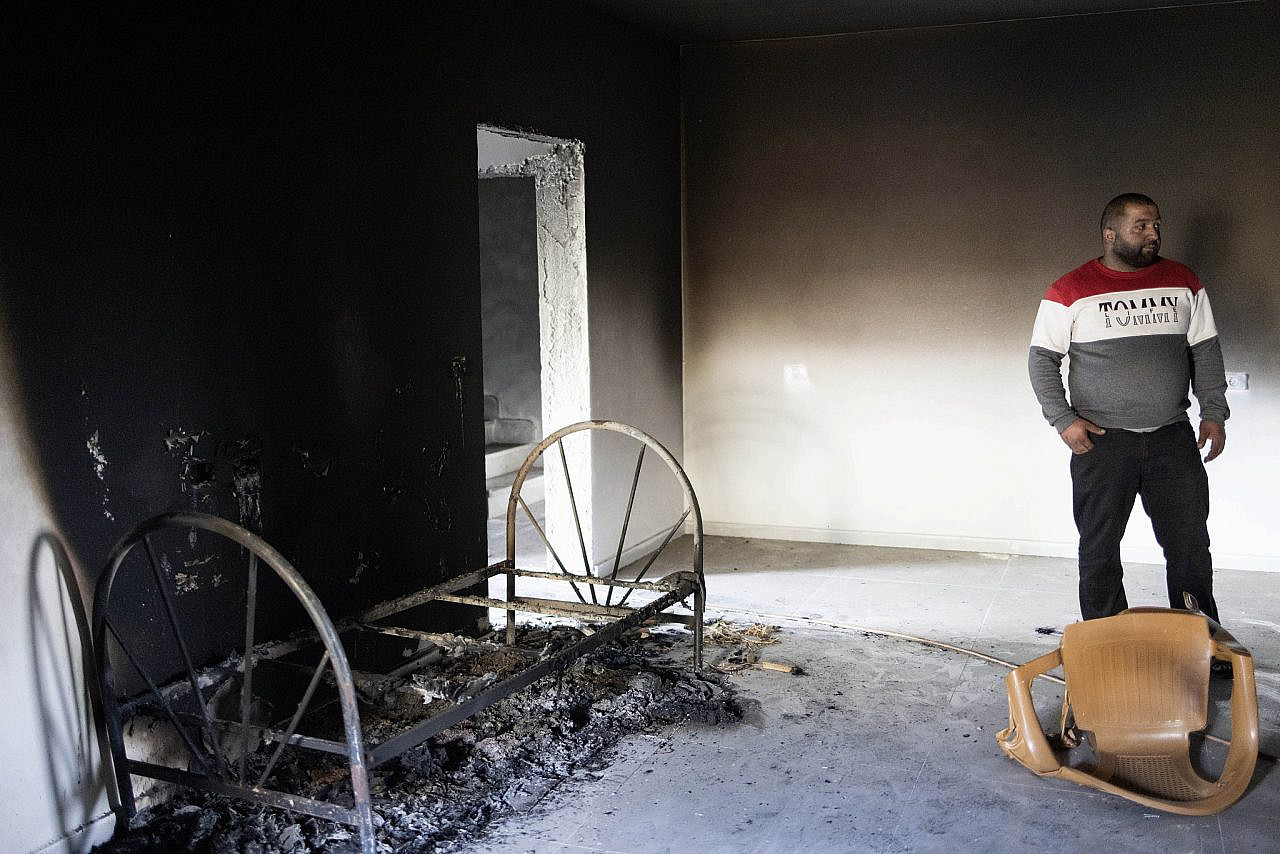
During the attack, Mohammed hid in the building’s stairwell and, with a wooden beam, blocked the door. “I heard them say, ‘Open up you son of a bitch.’ I hid there, then went up to the roof and hid behind a closet.”
According to Mohammed, four Israeli military jeeps were positioned outside the house, from where they fired teargas at the residents who tried to protect themselves and their property. On Sunday, many tear gas canisters could be seen scattered around the site.
“Three minutes after my family fled, [the soldiers] came here. After many minutes, the settlers continued on and some of the army stayed here. The soldiers opened the way for the settlers and let them attack.” On the road near his home, there was still a stone barrier set up by settlers “so that ambulances and assistance couldn’t arrive,” Mohammed added.
The village of Duma made headlines in Israel and around the world in 2015 after an Israeli settler, Amiram Ben Uliel, set fire to the home of Sa’ad and Riham Dawabsheh, killing them together with their 18-month-old son, Ali. Ahmad, Sa’ad’s brother, suffered severe burns in the attack. Since then, there haven’t been attacks of this magnitude in the village, and Saturday pogrom evoked traumatic memories.
“Of course it reminds us of what happened to the Dawabsheh family,” Mohammed Dawabshe said. His house, like many others in the village, has a thick mesh covering the windows to make it impossible to insert burning objects — a lesson learned from 2015. “There is no security, neither on the roads nor at home,” the council leader added. “If the residents hadn’t fled, entire families would have been burned in their homes.”
Most read on +972
In a statement to +972, an Israeli army spokesperson said of the soldiers’ presence in the village: “On Saturday, IDF forces operated throughout Judea and Samaria in order to disperse the friction that developed in the area, and to protect property and the lives of all civilians. Any complaint received about inappropriate conduct by IDF soldiers will be examined as is customary and dealt with accordingly.”
+972 contacted the police for comment on whether any suspects in the attacks on Duma and other villages over the weekend have been arrested; their response will be added as and when it is received.
Versions of this article were first published in Hebrew on Local Call. Read them here and here.


